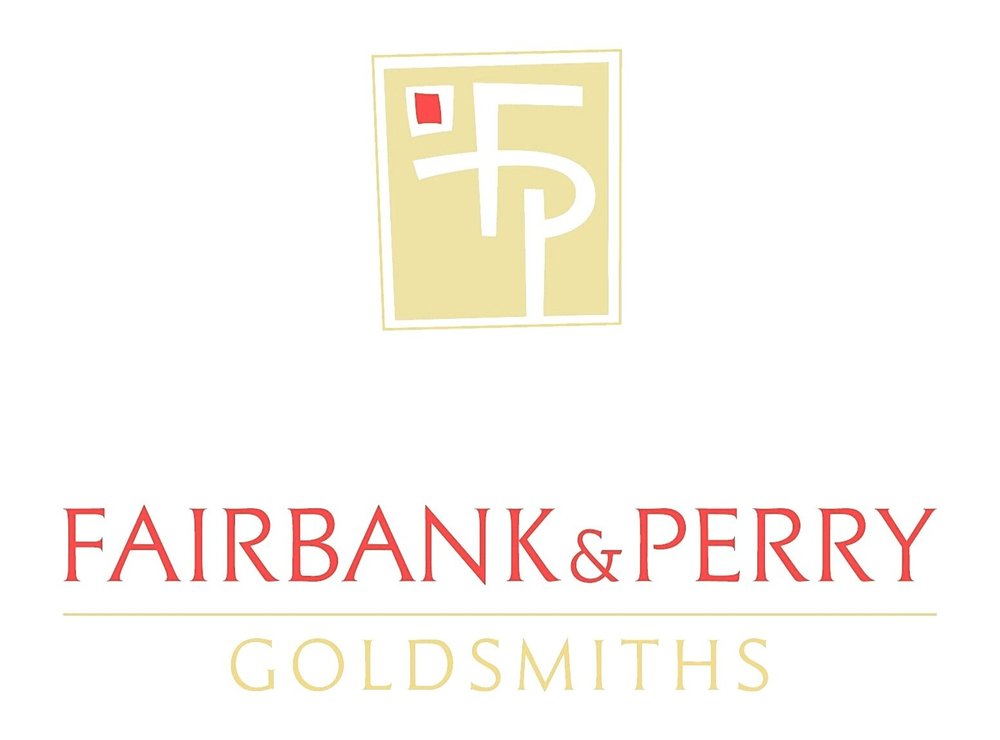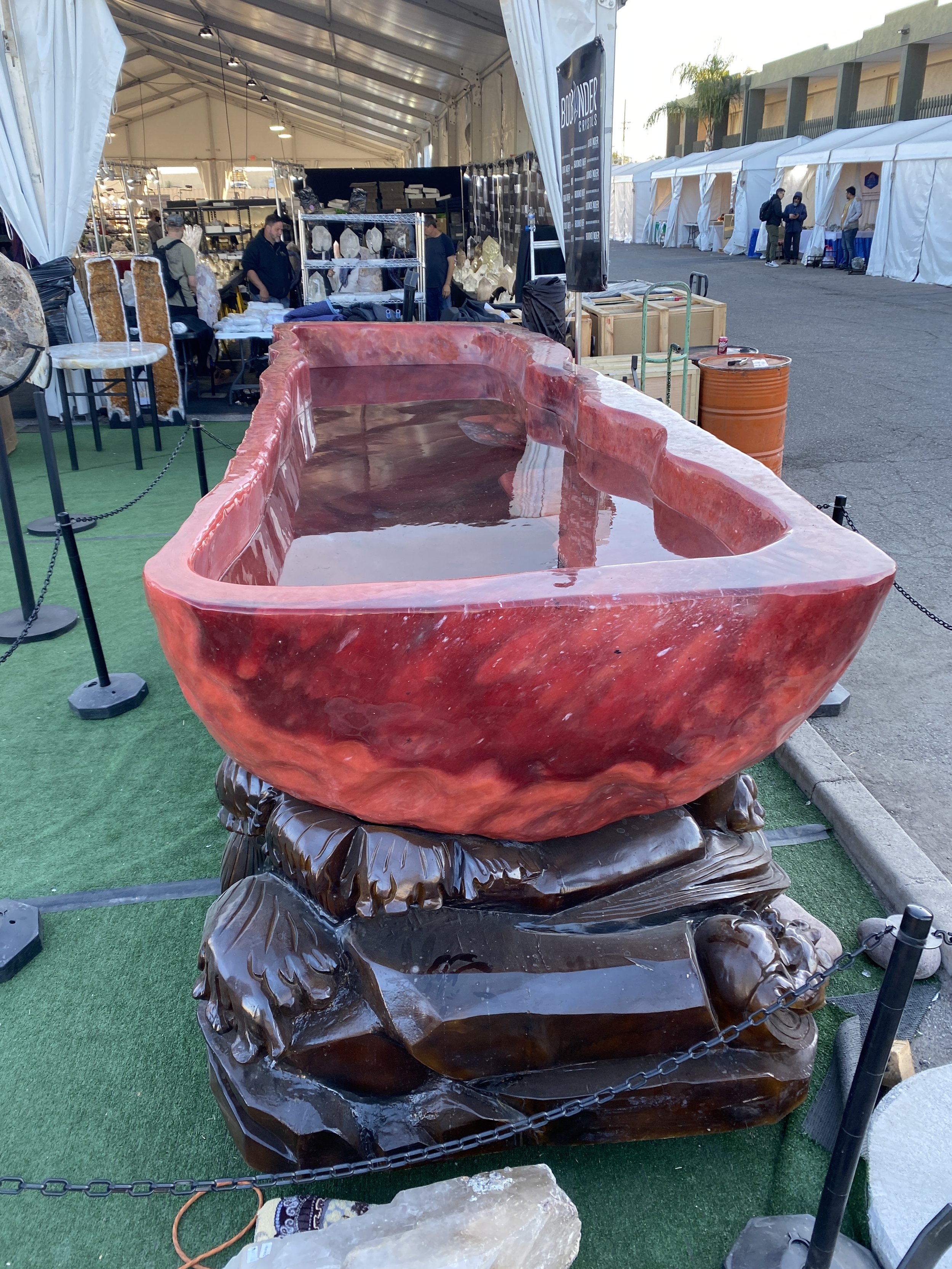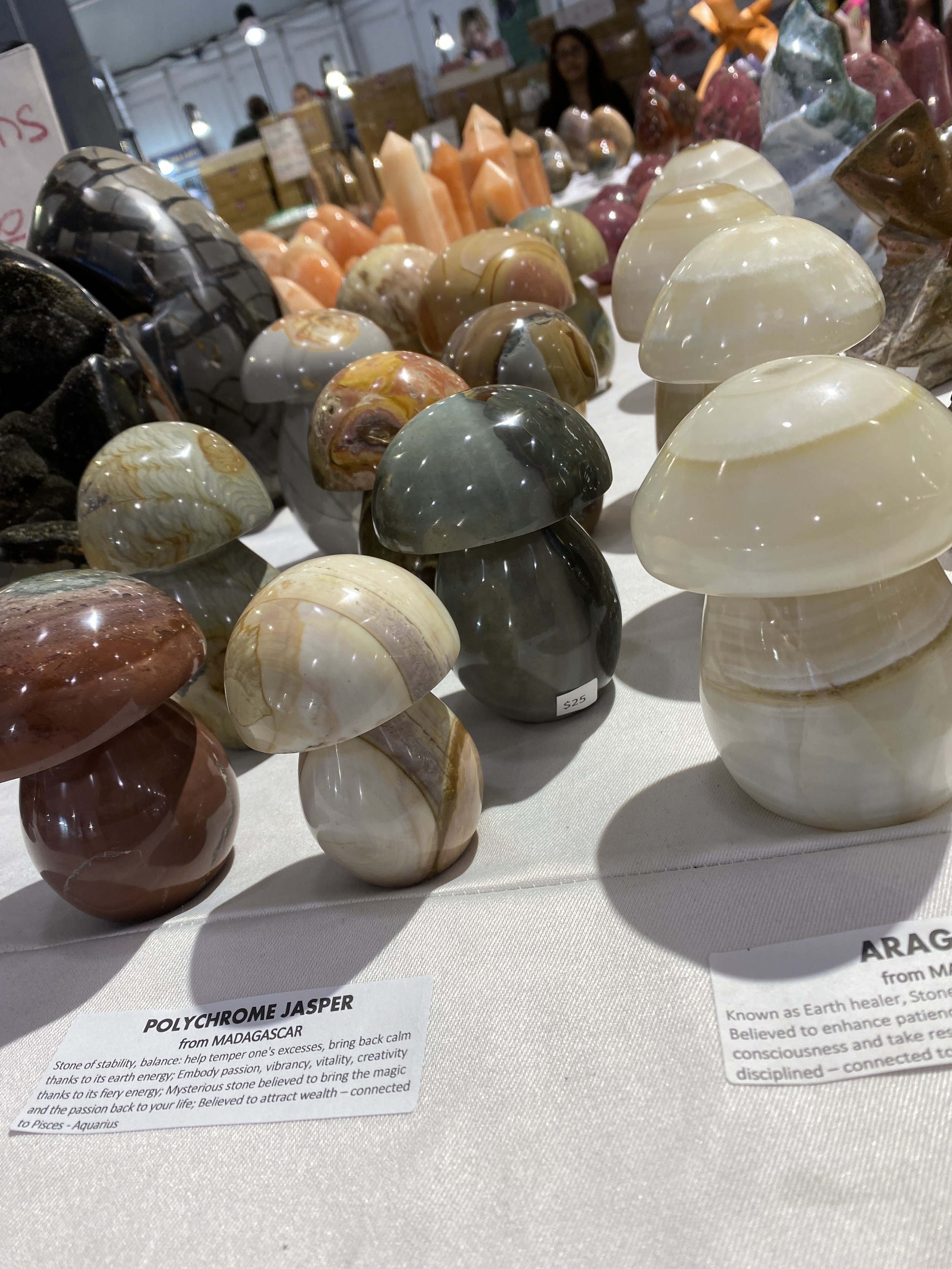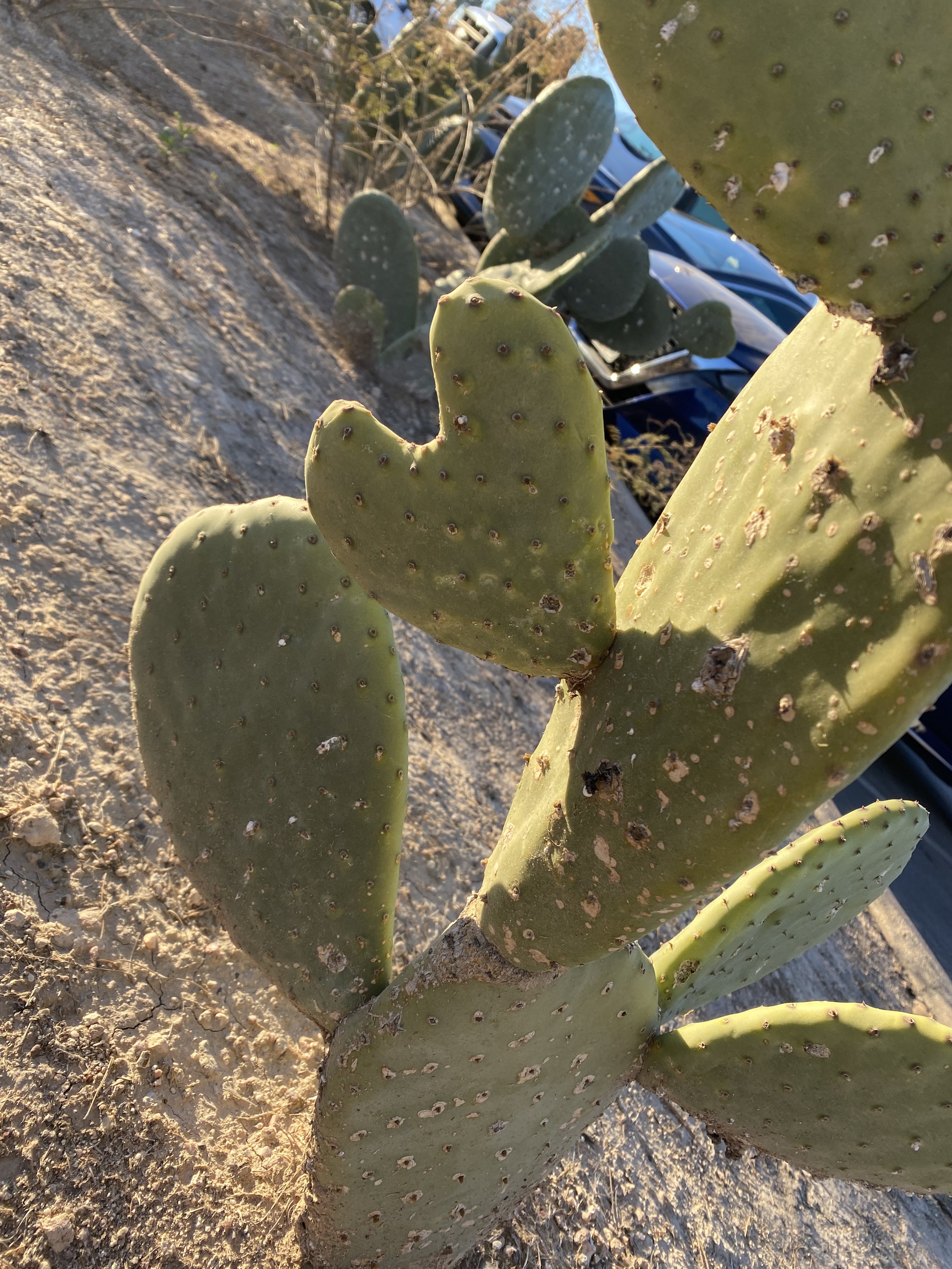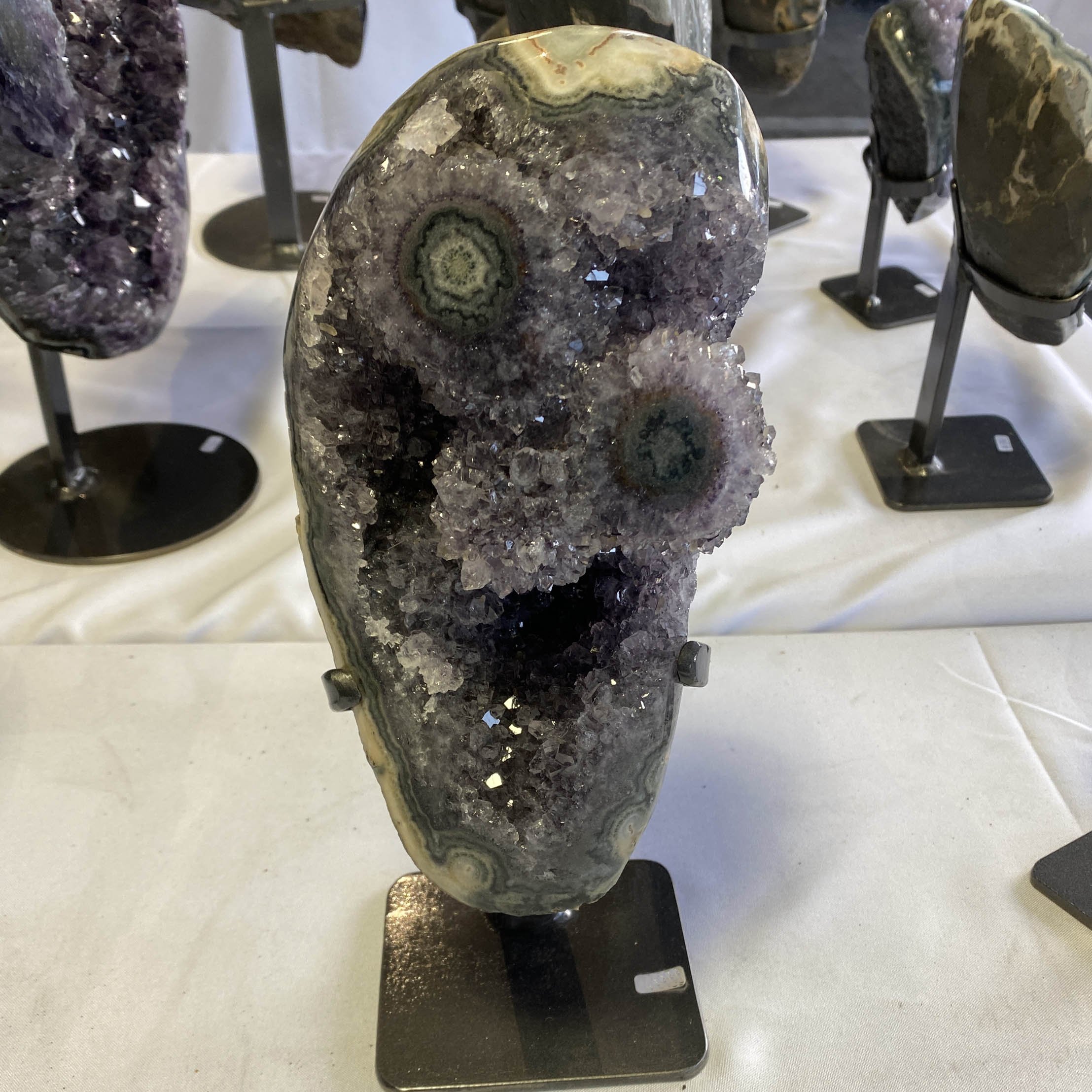It’s hard to believe it’s been almost a month since we returned from Tucson. It took us all that time to recover, reorganize and catch up with our custom work before sitting down to write about our trip!
Well, we had a marvelous time at the gem shows. We attended four different shows and came back with a mighty haul of fascinating stones, from the funky to the sublime. And, to sustain our energy, we ate plenty of delicious tacos from Seis Kitchen, an open courtyard just a short walk away.
Here are some fun things we saw: a giant red stone bathtub, a mini jasper mushroom forest, cactus love, and a Picasso-like geode!
So, what did we learn from our trip?
The Ethical Gem Fair: This small but energetic show was our first stop, where we were hoping to make connections to dealers who are concerned-- above all else-- with sustainability and equity in the gem industry.
It is a tough thing to trace a gem all the way from mine to market, and ensuring that each step of the journey includes a commitment to worker rights, environmental protection, and product integrity. Most mining of colored stones happens on a small scale with hand tools that are minimally destructive to the environment. Even so, it is often dangerous work shouldered by native workers living close to the mine. Because of where gems are located, there can be no gem industry without someone performing this grueling work in a remote location. It is not a job many of us would want, and yet it is a legitimate way of life for many people. Fair compensation is the key, and this group made the case that we as an industry are far from achieving that ideal across the board.
But it is possible to move the industry slowly toward putting ethical concerns front and center of the protocols for bringing the gems to market. While our larger colored gems come from dealers who personally know the miners and cutters they buy from, the smaller stones that we use as accents in our designs are harder to trace. Attending this show made us realize that there is more we can do to align the requirements of our designs with the principles of fairness for everyone involved.
Our favorite booth at the Ethical Gem Fair belonged to Columbia Gem House, based in Vancouver, WA. From them we bought an enchanting free-form Brazilian emerald, an Indian grape garnet, aquamarines from Africa, and a sweet selection of copper-containing chrysocolla in attractive cushion shapes that are bound to become one-of-a-kind pendants. Additionally, we learned about their impressive selection of small gems (called “melee”) in sizes from 1 to 3.5 millimeters, which they can document from the original mines to their own cutting facility. We’re excitied to start using these fair-trade gems in our Birthflower pendants!
The benefit of seeing gems up close and in person before you buy.
We all know that these days virtually anything and everything is available to purchase online. But it is, in our opinion, the worst way to buy gemstones! Why? Because you can only really know a stone by holding it in the light and moving it around, watching the way light reflects off its facets, seeing the way color is distributed throughout the stone, looking for that internal glow or fire that differentiates a standard stone from a truly special one.
When we go to shows, or when a dealer comes to our shop, we’re able to handle and examine a gem through a loupe, looking for scratches, chips, surface-reaching inclusions, crooked facets, and any other defect that affects the gem’s value and wearability.
Seeing gems in person allows us to get to know its unique attributes, and informs how best to design with the stone’s features in mind. Take this lovely little black opal, which seems to contain every color of the universe within it! I could have watched it dancing on my hand for hours…
Yep, that one came home with us. It is asking to be a ring, so the wearer can appreciate all those tiny color sparkles without needing a mirror. We will happily comply.
Everything changes.
And, in keeping with the lesson of the early 2020s, this trip reminded us that nothing is guaranteed. Gem searching is never predictable. After all, natural stones are not produced in a factory, but are created under extraordinarily unlikely circumstances and brought to us through a complicated supply chain, often over vast distances. We were surprised to see that some of our favorite materials were quite scarce, and the remaining offerings were of lower quality than in past years. For example, we’re always looking for top-quality rose-cut tourmalines to use in our GEO collection. This year, we were hard-pressed to find ones that were up to standard, with bright colors and pleasing shapes. Most were too dark, too cloudy, or simply not “gemmy” enough. After hours of searching through yards of stones (they are often presented on adhesive sheets or in long trays), we selected a grand total of 18 stones that made the cut. They are beautiful, and we have by now forgotten all about those sore neck muscles and tired eyes!
On the other hand, we more easily found lovely cabochon gems, the likes of which we hadn’t seen in years. We were enchanted by mandarin garnet, moonstone, amethyst, and opal cabs, not to mention the full rainbow spectrum of tourmaline. It was hard to suppress the urge to buy them all, knowing that we may not see that abundance next year. At least we brought enough home to keep us busy all year long. Expect a lot of power rings and pendants showing up on our website over the coming months!
If you want to know more about our trip and see the new gems before they’re set, please come in.
Maybe you’ll fall in love with something the same way we did… at first sight!
